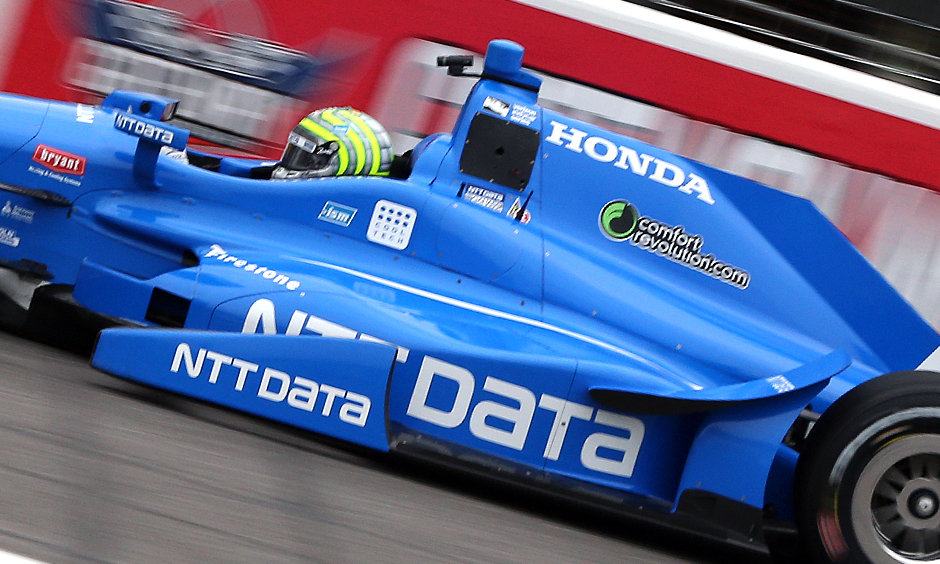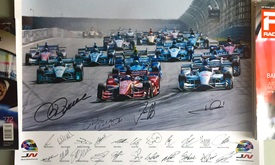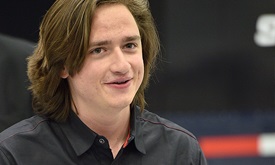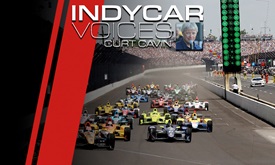Ganassi-Honda reunification still a work in progress
DEC 19, 2016
The news altered the landscape of racing. Chip Ganassi Racing’s decision to return to Honda after three years with Chevrolet changed the power dynamic in the Verizon IndyCar Series, pitting rivals in opposite camps and elevating Honda’s standing in the ever-important battle between manufacturers.
Still in its infancy, the reunion of Ganassi and Honda Performance Development has been received with cautious optimism by key players at Ganassi. In part, the optimism is a product of familiarity. Many of the decision-makers on both sides were in the same or similar positions when the two sides parted after the 2013 season.
“Even though we’ve been with HPD in the past, we’re learning about each other again,” CGR managing director Mike Hull said. “It helps that we’ve interacted with each other in the past and a lot of the key principals on both sides are still in place. That doesn’t make the transition nearly as difficult.”
Before going to Chevy in 2014, Ganassi had partnered with Honda for eight successful seasons that included five championships – Dario Franchitti in 2009, 2010 and 2011 and Scott Dixon in 2008 and 2013. The three seasons with Chevy weren’t quite as fruitful; Dixon did win the championship in 2015, but the team won just eight of 50 races during that time while rival Team Penske (also running with Chevy) won the other two championships and 18 of the 50 races.
So HPD president Art St. Cyr and VP/COO Steve Eriksen began negotiating with Ganassi for a return that put veteran execs and engineers back on the same page. Longtime HPD engineer Allen Miller, now the race team leader, will join chassis group leader Tom Reichenbach and engine group leader Mark Crawford as they combine forces with Ganassi lead engineers Chris Simmons (Dixon), Todd Malloy (Tony Kanaan), Eric Cowdin (Charlie Kimball) and Brandon Fry (Max Chilton).
“This is about people – the interchange and communication – and understanding how to utilize the people resource with your manufacturer,” Hull said. “We’ve had a great relationship with Chevrolet, and part of that was understanding how to work together. We had to understand our strengths and weaknesses together and understand that people resource in order to get the most out of it. We relied heavily upon the engineering aspect of what we did with the hardware provided. With the Honda situation, it’s exactly the same.”
The switch to HPD put Ganassi and Penske in separate manufacturer camps and leveled the balance of power between INDYCAR’s two engine manufacturers. With an expected but not-yet-official move of AJ Foyt Racing from HPD to Chevy, Honda will gain an additional two full-time cars for 2017, making the tentative offseason count Honda 13 and Chevrolet eight – pending what happens with the KVSH Racing entry that was with Chevy this year.
For Ganassi, the difference is noticeable, the change welcome but trying.
“The manufacturers are definitely different,” Dixon said. “The Chevrolet was more of a turnkey operation, but with the Honda we can be more embedded with the development and areas for improvement as a team. I see it more as a group movement in direction, but it’s extremely tough right now with the timing. We’ve been with the same manufacturer for some time now, and you see the change that has gone on. It’s all plateaued, so we’re the only one on a steep learning curve.”
Before aero kits were introduced in 2015, switching engine manufacturers wasn’t a major play. Now, even with a freeze on kit development in 2017 and universal kits set for introduction in 2018, changing manufacturers is a complicated undertaking.
“It’s not just changing an engine. It’s changing aero kits,” Kanaan said. “All the numbers and knowledge we gained from using one manufacturer are gone. We’re starting over and learning everything again. It is a big challenge for us and a big change for us.
“Just a simple change in engines would’ve been fairly simple in terms of data. We’d know almost immediately where and when we’d have a difference in power compared to the previous engine. But with an engine and aero change, now you’re looking at front wings, rear wings, aero data – everything. The setups are not the same. We’re starting from scratch.”
While the Ganassi/Honda reboot has yet to fully stretch its legs on the track – Kanaan participated in a one-day test at Gateway Motorsports Park in October but the first scheduled test for all four team cars Dec. 9 at Sebring was postponed because of poor weather – the early interaction from the Ganassi perspective have been positive.
“What we like about Honda is their culture,” Hull said. “How they work together, how they support each other and how open and positive they are in terms of what does and doesn’t work. They aren’t afraid to talk about both aspects. That’s the kind of team we are, too.”



















